“With tremendous Douro still wine coming from the high vineyard areas of the high plains – it’s time to start to rethink what this area of Portugal is capable of,” writes Wilson.
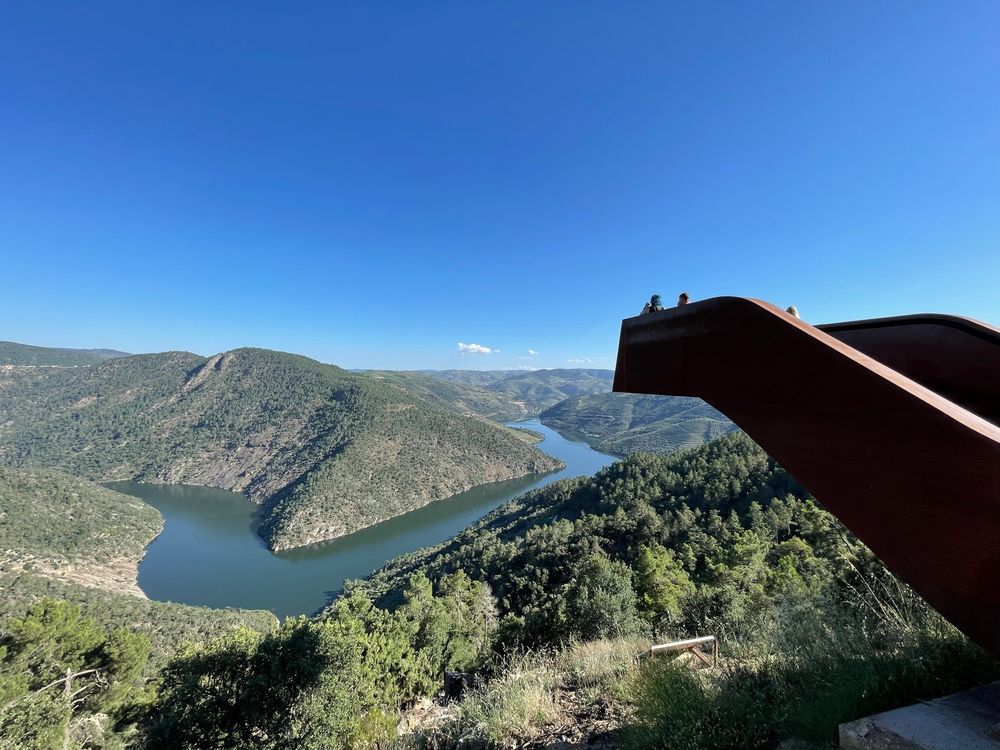
Some of the jaw-dropping scenery in the Douro Valley
When a trip was offered to taste ‘wines from the Highlands’, I thought I was heading north, but then checked myself and realised that, while climate change is altering the viticultural landscape across Europe, Scottish wine is still a few years off.
Reading the invite again the penny dropped, I was to explore high-altitude wines from the Douro Valley in Portugal, namely still wines from the famous Port producing region.
The Douro is the largest mountain vineyard area in the world, known for its jaw-dropping landscapes, steep vineyards and myriad indigenous grape varieties, but its little-known plateaus are where some of the region’s most interesting still wines start their life.
The vineyards of the ‘planalto’ – or ‘high plains / highlands’ – of the Alijó municipality, for example, rise to more than 800 metres above sea level and this altitude helps to retain freshness and verve in the grapes which are grown here.
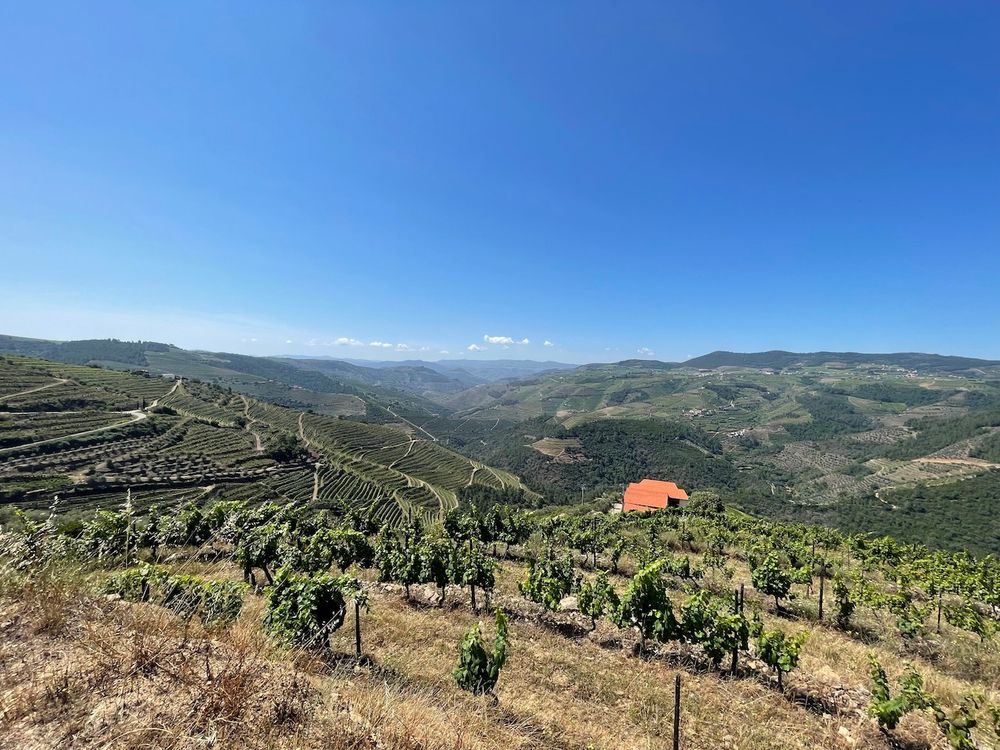
Pedra Alta, top of the valley
The first vineyard visit of the trip was to Quinta da Pedra Alta a short drive from Alijó in the Cima Corgo sub-region of the valley. We were transported to the top of the estate’s steep terraced plantings in a variety of vehicles, including winemaker João Pires’s Renault 4 which was surprisingly nifty at traversing the slopes, more so than commercial director Andy Brown’s rental car.
The view from the top of the vineyards down the valley was breathtaking and, even though it was mid-morning in mid-June, you could feel the searing heat in the air. If this was the coolest part of the valley, you can only imagine how hot it gets at lower altitude with less breeze in the air, and how that translates to the wines.
Pedra Alta has been pioneering still wine production since the mid-1990s when a renovation at the Quinta took place and the focus shifted to include ‘table’ wines as well as Ports. In 2018 the Quinta was sold to former Manchester United chairman Ed Woodward which explains the signed Cristiano Ronaldo shirt in the tasting room.
During a fascinating tasting in this picturesque room overlooking the valley, Pires and Brown (who sound a lot like a Premier League strike partnership as it happens) talked at length about how important still wines are to Pedra Alta, and what they are doing in the vineyard and the cellar to produce fresh, vibrant wines which dial down the ABV and retain acidity.
It’s all about “drinkability” says Brown, who’s keen to surprise and delight consumers when they first taste the Pedra Alta wines. “This is not what people expect from The Douro,” he adds as we sip the ‘Pedra a Pedra’ Branco 2022, a firm, aromatic white which hits the spot after 30 minutes in the baking vineyards.
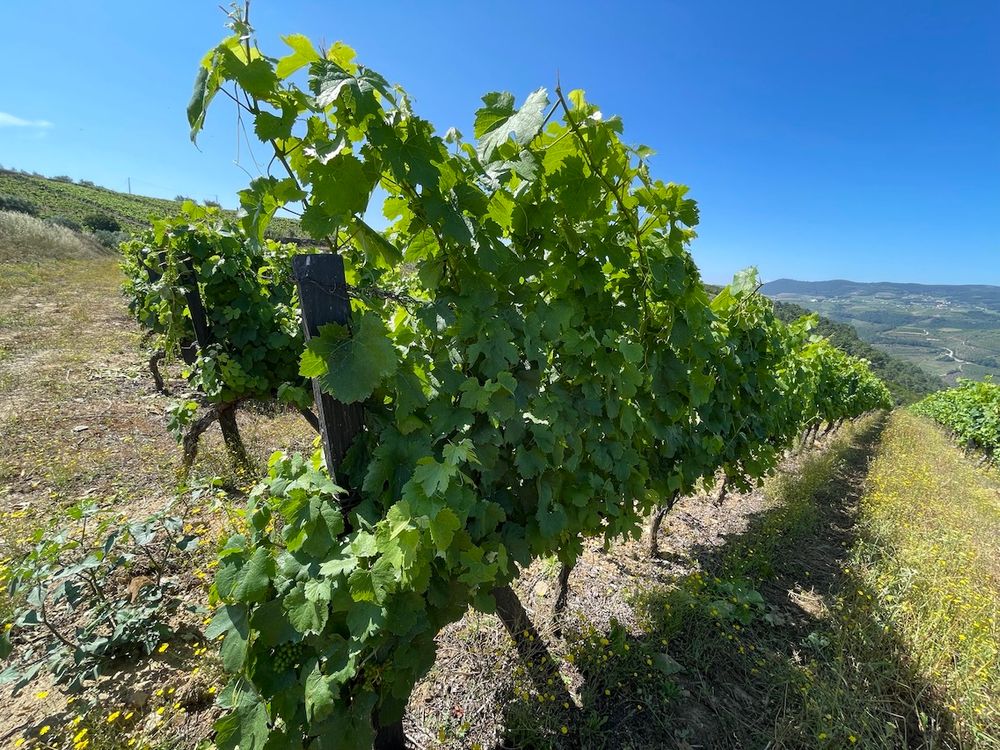
Vines at Pedra Alta
Pires explains how he and his team go about putting the wines together. “With our table wines we try to bring the ‘Port school’ in terms of blending into the table wines. They are to reflect balance and a sense of place,” he says.
For example, the Branco has 1% of the Donzelinho Branco grape in the blend, a grape with searing acidity which adds an acid kick when blended with the Rabigato and Gouveio grapes (more fleshy, even creamy varieties). Other techniques Pires uses include picking early to retain freshness, using different vessels for fermentation depending on the grape then blending to balance, lees stirring and ageing wines in a variety of different sized barrels and steel tanks.
The winery introduced the ‘Prova’ series of wines in 2016, which sees limited-edition wines made using varieties and techniques that are experimental or unfamiliar, as well as field blends. Some of these are limited to just a few hundred bottles, others may make their way into the core range in the future or at least inform some of the decisions and techniques of the Quinta’s core wines.
This kind of new wave winemaking and willingness to experiment is changing the perception of the Douro Valley and drawing new consumers to the wines from here, in particular the still wines.
A different Douro

Wine & Soul: an enviable collection of white, rosé, red and fortified wines, which look and taste modern
It was clear from time spent on the ground that there’s a new generation of producers here who dare to create wines that are different from the usual profile of the Douro, and while that means championing modern still wines that are racy, crunchy and above all fresh it doesn’t mean that the history of the valley and its wines are overlooked.
While experimentation in the still wines is evident and there’s a real pride in making wines which are cut from a different cloth to the fortified wines the valley is famous for, everyone makes Port and it’s a respected reference point for all the more modern styles of wine production.
Everywhere we go we are offered Port and the winemakers we meet are just as passionate about it as the still wines but in a different way. In fact some of the stand-out wines of the visit were fortified, and not all made in the famous styles we are familiar with in the UK marketplace. Aged white Ports and Colheitas really shone.

Wine & Soul: it all starts in the vineyard
One producer who did a superb job with modern, bright fortified wines which complemented the rest of their collection very well was Wine & Soul. Married couple Sandra Tavares da Silva and Jorge Serôdio Borges make their wines in a small but beautiful cellar in the Pinhão Valley, and for them it all starts in the vineyard.
The couple own various parcels of land in the valley and are deeply passionate about farming and the work they do in the vineyard. Where they can, they purchase the forest around their vineyards to help maintain biodiversity among the vines and give a buffer from other growers who may not share their vineyard practices when it comes to spraying and other viticultural techniques.
They began life making ‘garage wines’ but now have an enviable collection of white, rosé, red and fortified wines, which look and taste modern; there’s a signature freshness and bright fruit across the range. This is a tight and beautifully put together collection of wines and they are doing well in the UK market, where they are distributed by Corney & Barrow.
While some of the producers we visited have a foothold in the UK many have yet to find a partner here, but given the emergence of quality still Portuguese wines as a category in the UK and – moreover – the quality of wines on show there will be plenty of opportunities in the future.

Rui from Quinta de Santa Eugénia
One producer we visited was clearly switched on to the international market both in their winemaking and packaging innovations. Quinta de Santa Eugénia is based in the village of Santa Eugénia and produces a diverse range of wines, including some excellent traditional method sparkling and a stand-out rosé .
Winemaker Rui Varela – a larger than life character, a bundle of energy and stories – is at the helm of this family business and has created a series of innovative and original labels for the wines in an attempt to bring in new – and younger – customers. Personalised labels, boxes plastered with slogans and Bob Dylan lyrics, and bag-in-box offerings are just some of the ways in which he is engaging with a new audience.
Given the traditional nature of much of the wine industry here it’s refreshing to see someone really pushing the envelope in this regard. It’s worth noting that Quinta de Santa Eugénia makes an outstanding olive oil too, which Rui is almost as passionate about as his bright red Tesla!

Lunch and tasting at Pedaços Douro
Another producer who’s making waves in this area, and has the most brilliant tasting room housed inside the cellar, is Pedaços Douro. The look and feel of their wines is eye-catching and contemporary, the wines themselves brim with life and full, ripe fruit. Their set-up is very ‘garagiste’ and reminded me a lot of some of the smaller, more leftfield producers in the Napa Valley, and it’s this kind of shift in presentation (both of the wines and the cellar itself) that adds a new spark and interest to the region.
The family behind Pedaços Douro also cooked us a most memorable lunch – including perfectly grilled steak seared over vine prunings in a wheelbarrow in a back alley behind the winery – and that alone is worth a visit to this real gem of a place.
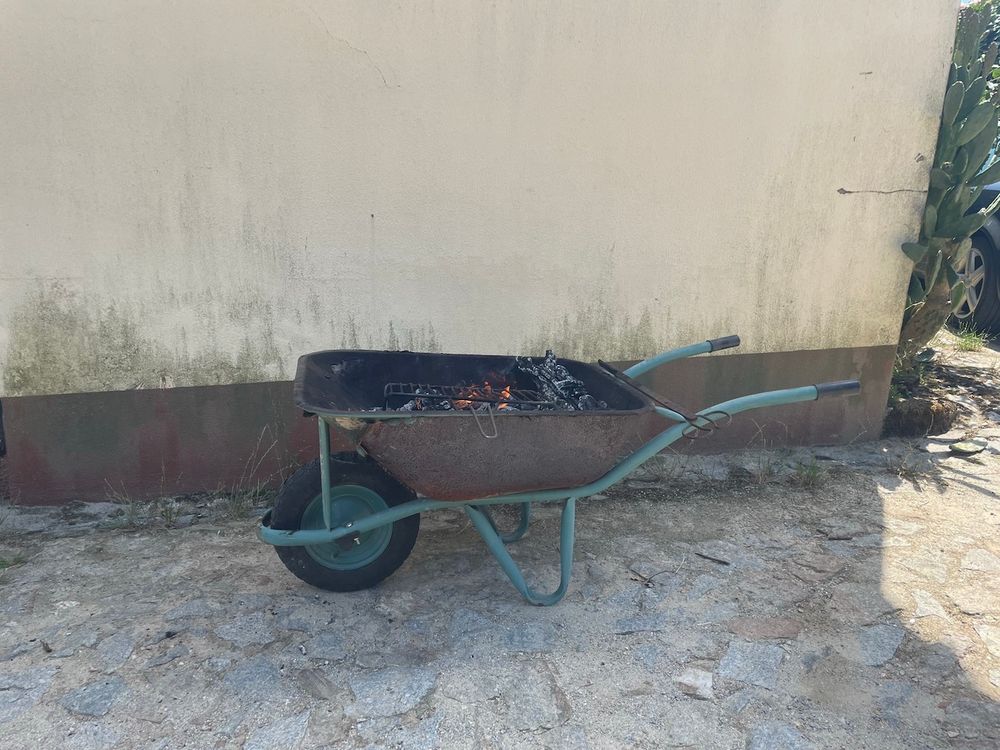
“It’s a barbecue Jim, but not as we know it”
Grape varieties
Portugal – and in particular the Douro Valley – is known for its impressive tally of indigenous grape varieties. Some 116 “allowable varieties”, according to the viticulture manager Rui Soares at Real Companhia Velha, a large producer with five quintas in the region.
“Until 10 years ago everyone used just 30 varieties, but now the doors have opened,” says Soares, who is excited about the possibility of fine-tuning further the still wines of the region through the use of little-known varieties which can bring different things to the table. It’s our very own “salt and pepper”, he says.
Given this rich diversity of grapes on offer, many – if fact most – of the winemakers we spoke to were less concerned with the varieties themselves used in the blends, and more interested in the stylistic qualities of the wines, and how various grapes brought different things to the party. The grapes were not glossed over, but it was understood how easy it is to get bogged down in the detail of the grape varieties, when the wine itself is greater.
It was more interesting for the winemakers and viticulturists we visited to accentuate the differences that the altitude of vineyards or the age of the vines had on the wine rather than going down grape varieties rabbit holes.
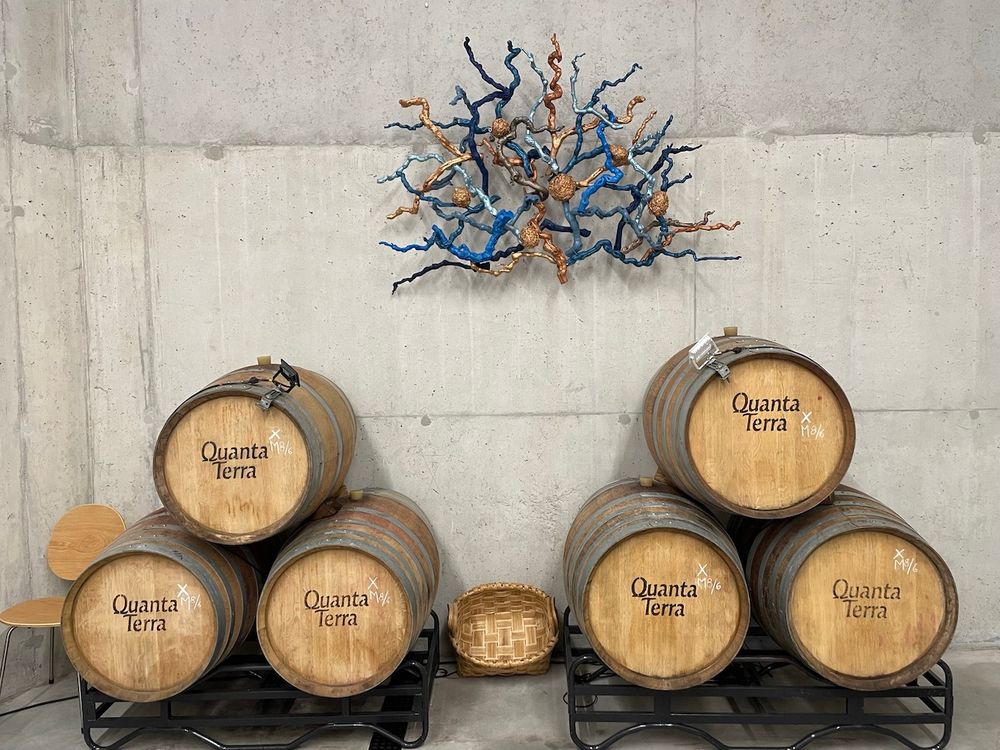
Quanta Terra: quality sparkling as well as still
“Our wines are blended in the vineyard,” says winemaker Celso Pereira from the Quanta Terra winery, the biggest sparkling wine producer in The Douro Valley. He takes sparkling wine very seriously and has previously worked at Schramsberg in the Napa Valley.
Tasting quality sparkling wine that had two-three years’ bottle age is not something anyone expected on this trip, and it’s a real eye-opener.
“Much of the vines for the sparkling cuvées are planted on granite rather than schist soils with vineyards more than 600 metres above sea level,” says Pereira. These are some of the highest ‘base wine’ vines in the valley and he believes that the granite soil is key to producing the best base wines for sparkling.
He’s certainly doing something right as these are serious wines with precise fruit, just enough developed characters to make them interesting, and – crucially – a strong and fresh acidity running through them.

Tasting at Quanta Terra
So finally…
With tremendous still and sparkling wines coming from the Douro Valley – notably from the high vineyard areas of the high plains – it’s time to start to rethink what this area of Portugal is capable of. It will always be known for its world-class fortified wines, but most wine here – as elsewhere – is drunk ‘at the table’ and that means still wine.
One of the stats we heard on the visit is that ‘more than 50% of the Douro under vine is for Port production,’ but that still leaves half, and a lot of work is being done with the other 50%, especially in the highlands of the Douro Valley.
Combine this with a real sense of itchy feet among the winemakers here – a need to show the world what’s possible – and that’s a recipe for producing and marketing exciting, world-beating wines.
“We are the New World of Portugal,” says winemaker Paulo Nunes from Costa Boal Family Estates, “a global Portugal with wines for each occasion.
































